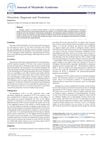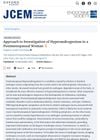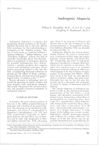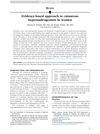A Diagnostically Challenging Case of Hyperandrogenism in a Postmenopausal Woman
October 2024
in “
Journal of the Endocrine Society
”
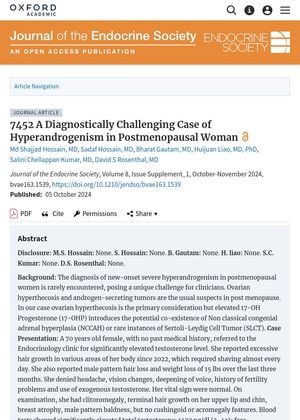
TLDR The case highlights the complexity of diagnosing high testosterone in older women and the need for thorough testing.
This case study discusses a 70-year-old postmenopausal woman with severe hyperandrogenism, characterized by elevated testosterone levels, excessive hair growth, male pattern hair loss, and weight loss. The diagnostic challenge lies in differentiating between ovarian hyperthecosis, non-classical congenital adrenal hyperplasia (NCCAH), and Sertoli-Leydig Cell Tumor (SLCT) due to elevated 17-OH Progesterone levels and asymmetrical ovarian enlargement. The patient underwent an ACTH stimulation test and imaging, revealing a prominent left ovary. She was referred for bilateral oophorectomy to obtain a definitive diagnosis. This case underscores the complexity of diagnosing hyperandrogenism in postmenopausal women and the importance of thorough differential diagnosis and laboratory analysis.
